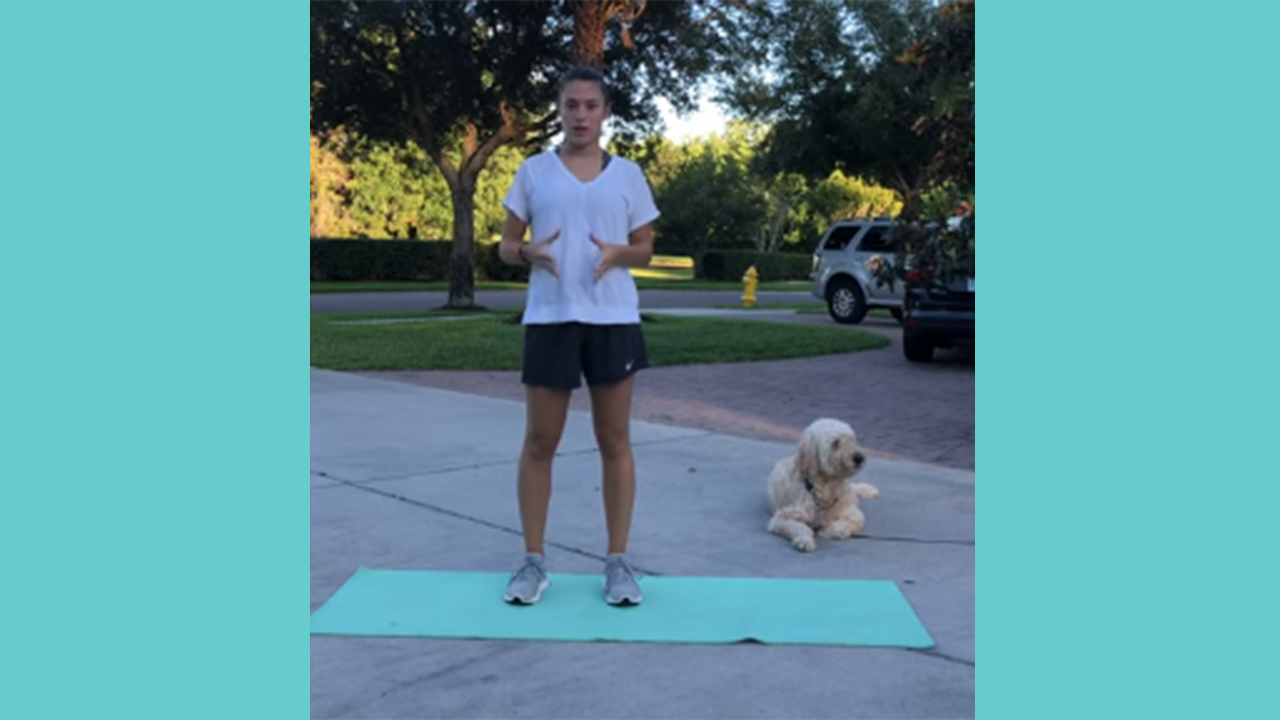Community Based Learning and Service Take a New Form

As an anchor institution in the city of Scranton, The University of Scranton has a fundamental connection to the communities of our region. For students attending the University, this connection often occurs in the form of Community Based Learning (CBL) experiences woven into university academic coursework that put theory into practice and are structured to meet community-defined needs.
This spring when the University transitioned to remote instruction due to the coronavirus pandemic, the disruption to life as usual produced an additional challenge for the University -- how to offer CBL without being able to engage directly with the people of Northeastern Pennsylvania.
While many traditional CBL courses and activities had to be canceled; others were able to be continued or adjusted. Faculty, staff and students contributed to new ways of re-inventing CBL to adapt to the remote format while still striving to meet the fundamental demands to serve partners and connect people. Traditional face-to-face CBL experiences were transformed into research-based projects, virtual tutoring and lesson plans for K-12 students, organizational promotion and media campaigns, and health promotion projects.
For Dr. Debra Fetherman and her students, the attention to partner needs remained at the forefront of all plans.
“In the pivot to remote learning during COVID-19 pandemic, students and I remained focused on meeting the needs of the community organizations and members that we serve,” she explained.
In looking at how her CHED 320 Planning, Implementing and Evaluating Health Education Programs course could adapt, Dr. Fetherman notes that she and her students found “many more opportunities than limits” for how they could continue CBL. According to Dr. Fetherman this allowed students to use additional skills, largely in communication, for projects such as health promotion through social media and the utilization of digital technology and providing wellness and health education remotely online through the use of new mediums such as Zoom meetings and YouTube videos.
Students in business faculty Dr. Abhijit Roy’s Digital Marketing and Consumer Behavior courses typically would make visits to community partners as part of CBL course projects. When Dr. Roy’s course was moved online this was no longer possible.
“This was indeed a challenging semester because of COVID-19,” Dr. Roy remarked.
However, he was still able to have his students participate in a research-based project looking at best practices in municipal communication. Student teams from Dr. Roy’s course reviewed best practices in social media and web-based communications and suggested possible changes for the City of Scranton. Their final presentations were shared via Zoom and attended by staff from the office of Scranton Mayor Paige Gebhardt Cognetti.
Julie Schumacher Cohen, who taught Religion, Politics and Public Service course as an adjunct professor in the political science department, worked with her students who were engaging in CBL with Catholic Social Services of the Diocese of Scranton to transition their projects to a remote environment. Social media campaigns for World Refugee Day and the creation of lesson plans for refugee citizenship classes were able to be done virtually as they were largely research and online-based.
“Even though my students missed the in-person interaction with CSS staff and their refugee clients, it was important that they were able to continue to assist with the organization’s important solidarity work which persists amid the pandemic,” commented Cohen, who also serves as Assistant Vice President for Community Engagement and Government Affairs and chairs the University’s CBL Board.
Several faculty and staff members also worked with University of Scranton students to continue engagement with children in grades K-12. What would have been in-person instruction shared at area schools was transformed instead into exercise and wellness videos for kids created by students in Dr. Jennifer Swartz’s Physical Therapy course. Education students in Dr. Catherine Cullen’s Math for Grades 2 – 4 course created Integrated Art Lesson Videos. Students from the Center for Service and Social Justice read stories for a virtual Scranton Story Time project.
“Students wanted to find ways to continue to work with community members and agencies. This project was creative and fun at a time when many were feeling isolated. Service is such a significant part of their formation and experience at The University of Scranton,” said Pat Vaccaro, Director of the Center and a member of the University’s CBL Board.
These virtual K-12 resources are available on The University of Scranton’s Office of Community Relations website. Parents and guardians can access the videos by visiting scranton.edu/virtualkidsactivities. The resources will be available for the duration of remote instruction due to the pandemic.
As we look ahead to the fall semester, the University has surveyed community partners and convened a special meeting, as a collaboration of the Office of Community Relations, Office of CBL and Center for Service and Social Justice, to consider ways to continue CBL in remote or limited in-person ways in light of health and safety concerns.
“Despite the necessity of physical distancing, the demand for social and community engagement remains. In each case noted what changed was the format; what remained is the need to be connected as university and community partners. We will be providing resources and ideas for faculty and students to continue this work in the year ahead,” said Dr. Meghan Ashlin Rich, CBL Faculty Coordinator and Professor of Sociology.






